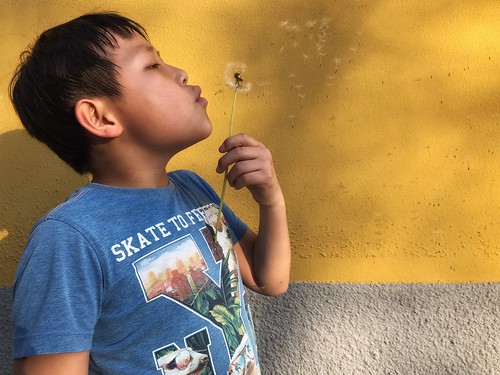Approved the final manuscript. Sexual behaviour of people living with HIV attending a tertiary care Naringoside web government hospital in Kathmandu, Nepala cross sectional studyMirak Raj Angdembe, Shyam Prasad Lohani, Deepak Kumar Karki, Kreepa Bhattarai and Niraj ShresthaAbstract Clinical improvements that adhere to antiretroviral therapy (ART) might lead to improve or resumption of higher risk activities that could unintentionally result in HIV transmission. The objective was to investigate irrespective of whether remedy status is really a considerable predictor of sexual threat behaviour (unprotected sex). MethodsA cross sectional study was conducted amongst people living with
HIV (PLHIV) (ART seasoned and ART na e) attending Sukraraj Tropical and Infectious Illness Hospital in Kathmandu, Nepal. A structured questionnaire was employed for data collection. Logistic regression with stepwise modeling was utilized to obtain adjusted odds ratios (OR) with CI. ResultsIn this study, of sexually active respondents reported sex having a typical companion. ART experienced PLHIV have been drastically additional probably to report consistent condom use with their normal partners in comparison with ART na e PLHIV (vs. ; P .) through the previous six months. In multivariate analysis, sex (OR CI), remedy status (OR CI) and alcohol consumption in the course of final sex with normal partners (OR CI) had been drastically linked  with unprotected sex. ConclusionART na e PLHIV have been five occasions a lot more most likely to exhibit sexual danger behaviour (have unprotected sex) than ART experienced PLHIV. Thus the study provided no proof to suggest that ART experienced PLHIV exhibit greater sexual danger behaviour in comparison to ART na e PLHIV. Prevention programmes want to emphasize on counselling to PLHIV and their common partners with focused interventions such as couple counselling and education programmes. KeywordsAntiretroviral therapy, Sexual behaviour, HIV, AIDS, Nepal The improvement of antiretroviral therapy (ART) has led to reduction in mortality and morbidity prices among folks living with HIV (PLHIV) An early initiation of ART will cause near regular good quality of life and lifespan . ART reduces the concentration of your virus in plasma which is a major determinant from the risk of transmission . Reduction in danger of transmission to sexual partners amongst these initiating ART will depend Department of Public Well being, Central Institute of Science and Technology, Pokhara University, Kathmandu, Nepal Full list of author facts is accessible at the end with the articleupon viral load in plasma and genital tract Even with all the infected partner on powerful ART and Ribocil-C 20684776″ title=View Abstract(s)”>PubMed ID:https://www.ncbi.nlm.nih.gov/pubmed/20684776 undetectable viral loads, transmission of HIV while uncommon has been documented . As a result, threat is substantially reduced but not fully eliminated. Clinical improvements that follow ART may well cause boost or resumption of high threat activities that could unintentionally lead to HIV transmission . Optimism associated for the success of ART in slowing disease progression, minimizing viral load, and enhancing overall health status could be critical things determining sexual danger behaviours. Considering that highly active ART (HAART) became obtainable, there has been an increase in sexual Angdembe et al. This short article is distributed beneath the terms with the Inventive Commons Attribution . International License (http:creativecommons.orglicensesby.), which permits unrestricted use, distribution, and reproduction in any medium, provided you give suitable credit to the original author(s) plus the supply, pr.Authorized the final manuscript. Sexual behaviour of people today living with HIV attending a tertiary care government hospital in Kathmandu, Nepala cross sectional studyMirak Raj Angdembe, Shyam Prasad Lohani, Deepak Kumar Karki, Kreepa Bhattarai and Niraj ShresthaAbstract Clinical improvements that adhere to antiretroviral therapy (ART) could cause raise or resumption of higher threat activities that could unintentionally result in HIV transmission. The objective was to investigate whether or not treatment status can be a considerable predictor of sexual danger behaviour (unprotected sex). MethodsA cross sectional study was performed
with unprotected sex. ConclusionART na e PLHIV have been five occasions a lot more most likely to exhibit sexual danger behaviour (have unprotected sex) than ART experienced PLHIV. Thus the study provided no proof to suggest that ART experienced PLHIV exhibit greater sexual danger behaviour in comparison to ART na e PLHIV. Prevention programmes want to emphasize on counselling to PLHIV and their common partners with focused interventions such as couple counselling and education programmes. KeywordsAntiretroviral therapy, Sexual behaviour, HIV, AIDS, Nepal The improvement of antiretroviral therapy (ART) has led to reduction in mortality and morbidity prices among folks living with HIV (PLHIV) An early initiation of ART will cause near regular good quality of life and lifespan . ART reduces the concentration of your virus in plasma which is a major determinant from the risk of transmission . Reduction in danger of transmission to sexual partners amongst these initiating ART will depend Department of Public Well being, Central Institute of Science and Technology, Pokhara University, Kathmandu, Nepal Full list of author facts is accessible at the end with the articleupon viral load in plasma and genital tract Even with all the infected partner on powerful ART and Ribocil-C 20684776″ title=View Abstract(s)”>PubMed ID:https://www.ncbi.nlm.nih.gov/pubmed/20684776 undetectable viral loads, transmission of HIV while uncommon has been documented . As a result, threat is substantially reduced but not fully eliminated. Clinical improvements that follow ART may well cause boost or resumption of high threat activities that could unintentionally lead to HIV transmission . Optimism associated for the success of ART in slowing disease progression, minimizing viral load, and enhancing overall health status could be critical things determining sexual danger behaviours. Considering that highly active ART (HAART) became obtainable, there has been an increase in sexual Angdembe et al. This short article is distributed beneath the terms with the Inventive Commons Attribution . International License (http:creativecommons.orglicensesby.), which permits unrestricted use, distribution, and reproduction in any medium, provided you give suitable credit to the original author(s) plus the supply, pr.Authorized the final manuscript. Sexual behaviour of people today living with HIV attending a tertiary care government hospital in Kathmandu, Nepala cross sectional studyMirak Raj Angdembe, Shyam Prasad Lohani, Deepak Kumar Karki, Kreepa Bhattarai and Niraj ShresthaAbstract Clinical improvements that adhere to antiretroviral therapy (ART) could cause raise or resumption of higher threat activities that could unintentionally result in HIV transmission. The objective was to investigate whether or not treatment status can be a considerable predictor of sexual danger behaviour (unprotected sex). MethodsA cross sectional study was performed  amongst individuals living with
amongst individuals living with
HIV (PLHIV) (ART skilled and ART na e) attending Sukraraj Tropical and Infectious Illness Hospital in Kathmandu, Nepal. A structured questionnaire was made use of for data collection. Logistic regression with stepwise modeling was employed to get adjusted odds ratios (OR) with CI. ResultsIn this study, of sexually active respondents reported sex having a standard partner. ART seasoned PLHIV had been significantly extra most likely to report consistent condom use with their common partners in comparison with ART na e PLHIV (vs. ; P .) throughout the previous six months. In multivariate evaluation, sex (OR CI), therapy status (OR CI) and alcohol consumption in the course of last sex with typical partners (OR CI) have been significantly related with unprotected sex. ConclusionART na e PLHIV have been five instances much more most likely to exhibit sexual threat behaviour (have unprotected sex) than ART knowledgeable PLHIV. Hence the study supplied no proof to recommend that ART experienced PLHIV exhibit higher sexual risk behaviour compared to ART na e PLHIV. Prevention programmes need to emphasize on counselling to PLHIV and their normal partners with focused interventions for example couple counselling and education programmes. KeywordsAntiretroviral therapy, Sexual behaviour, HIV, AIDS, Nepal The improvement of antiretroviral therapy (ART) has led to reduction in mortality and morbidity rates among individuals living with HIV (PLHIV) An early initiation of ART will cause near standard high quality of life and lifespan . ART reduces the concentration of your virus in plasma which is a main determinant on the risk of transmission . Reduction in threat of transmission to sexual partners amongst these initiating ART will rely Division of Public Wellness, Central Institute of Science and Technology, Pokhara University, Kathmandu, Nepal Complete list of author info is readily available at the finish with the articleupon viral load in plasma and genital tract Even together with the infected companion on efficient ART and PubMed ID:https://www.ncbi.nlm.nih.gov/pubmed/20684776 undetectable viral loads, transmission of HIV despite the fact that rare has been documented . Thus, threat is substantially lowered but not completely eliminated. Clinical improvements that comply with ART may well lead to improve or resumption of higher threat activities that could unintentionally lead to HIV transmission . Optimism associated for the achievement of ART in slowing illness progression, minimizing viral load, and enhancing overall health status may be critical factors figuring out sexual threat behaviours. Due to the fact highly active ART (HAART) became available, there has been an increase in sexual Angdembe et al. This short article is distributed below the terms in the Creative Commons Attribution . International License (http:creativecommons.orglicensesby.), which permits unrestricted use, distribution, and reproduction in any medium, supplied you give proper credit for the original author(s) as well as the source, pr.